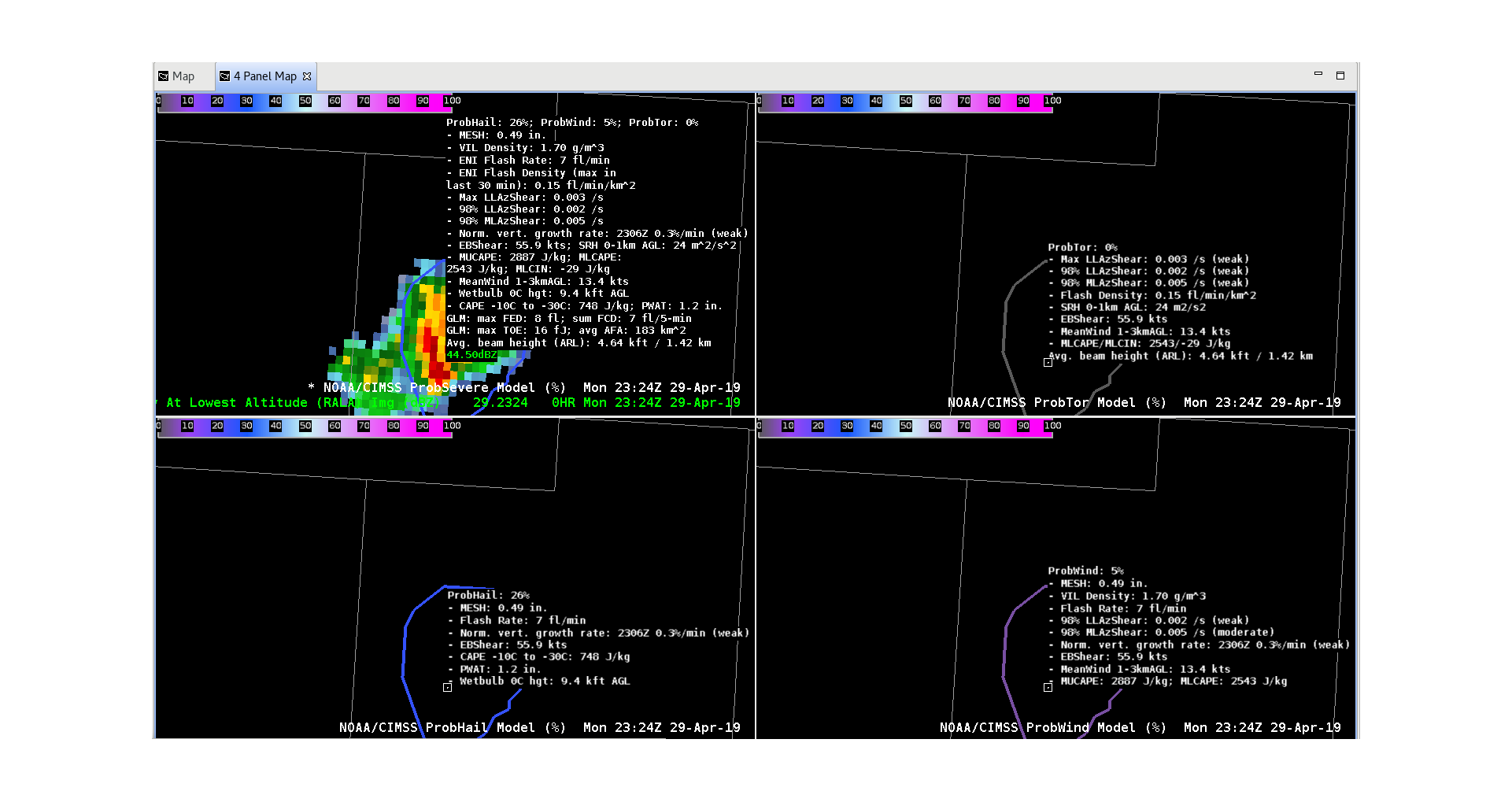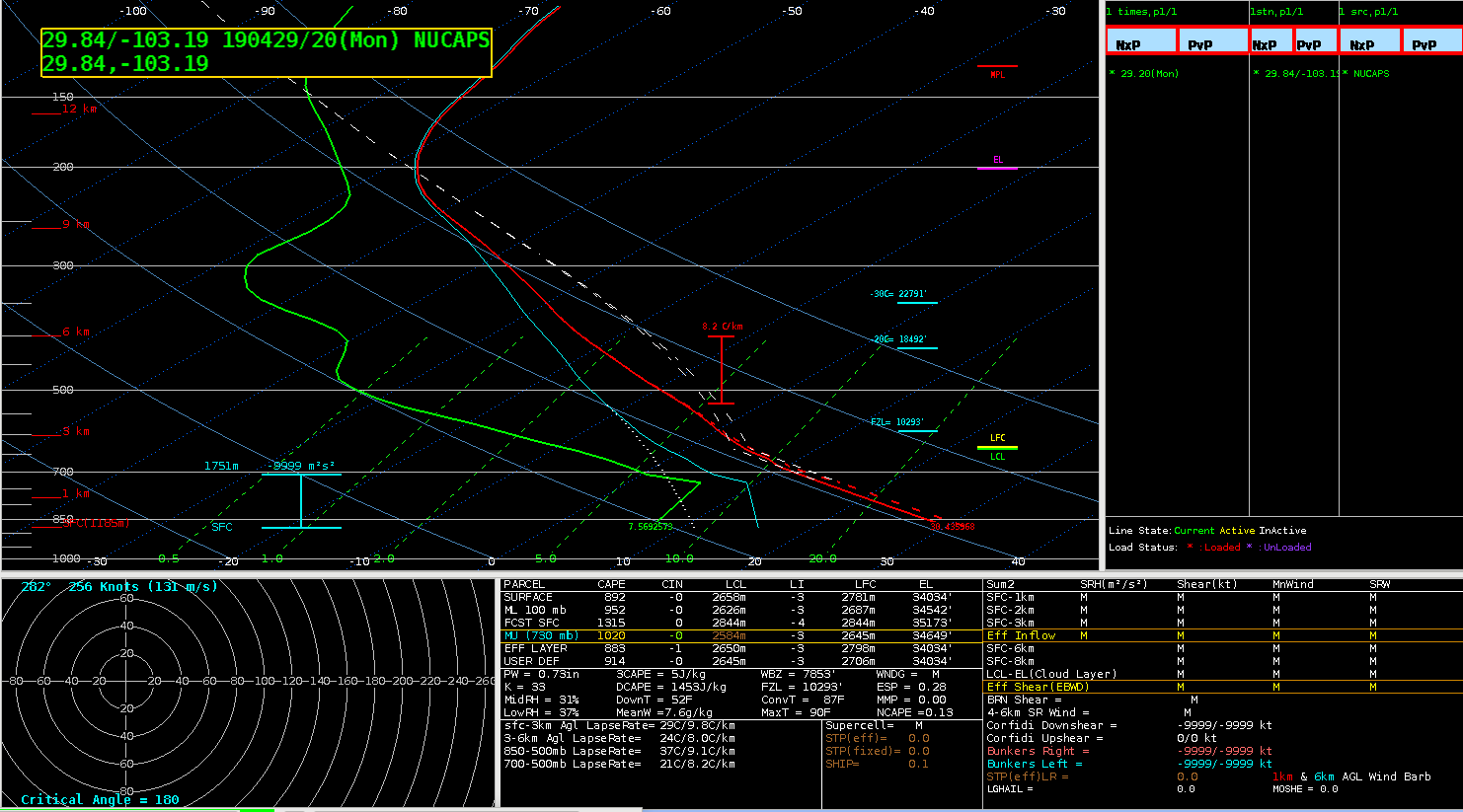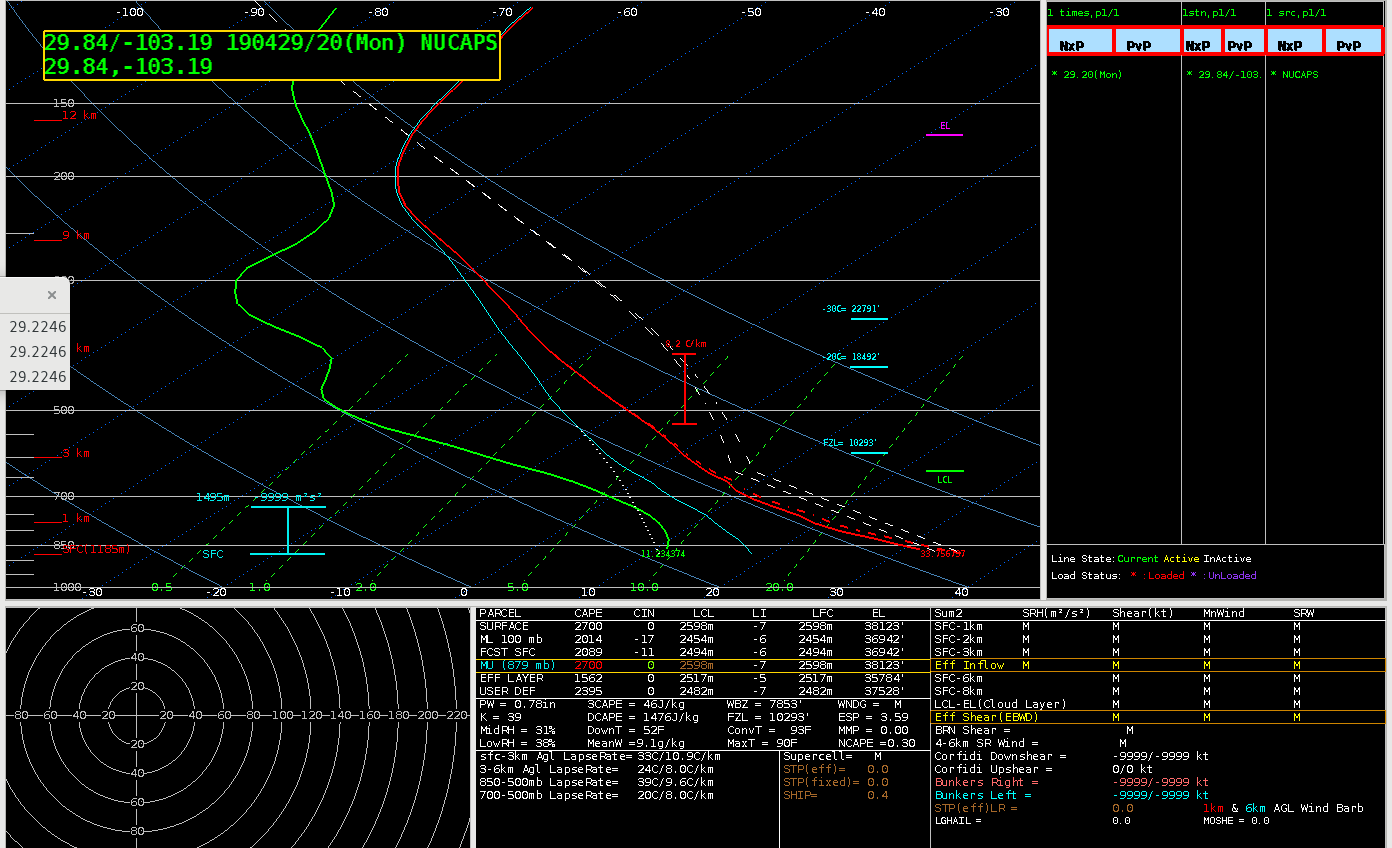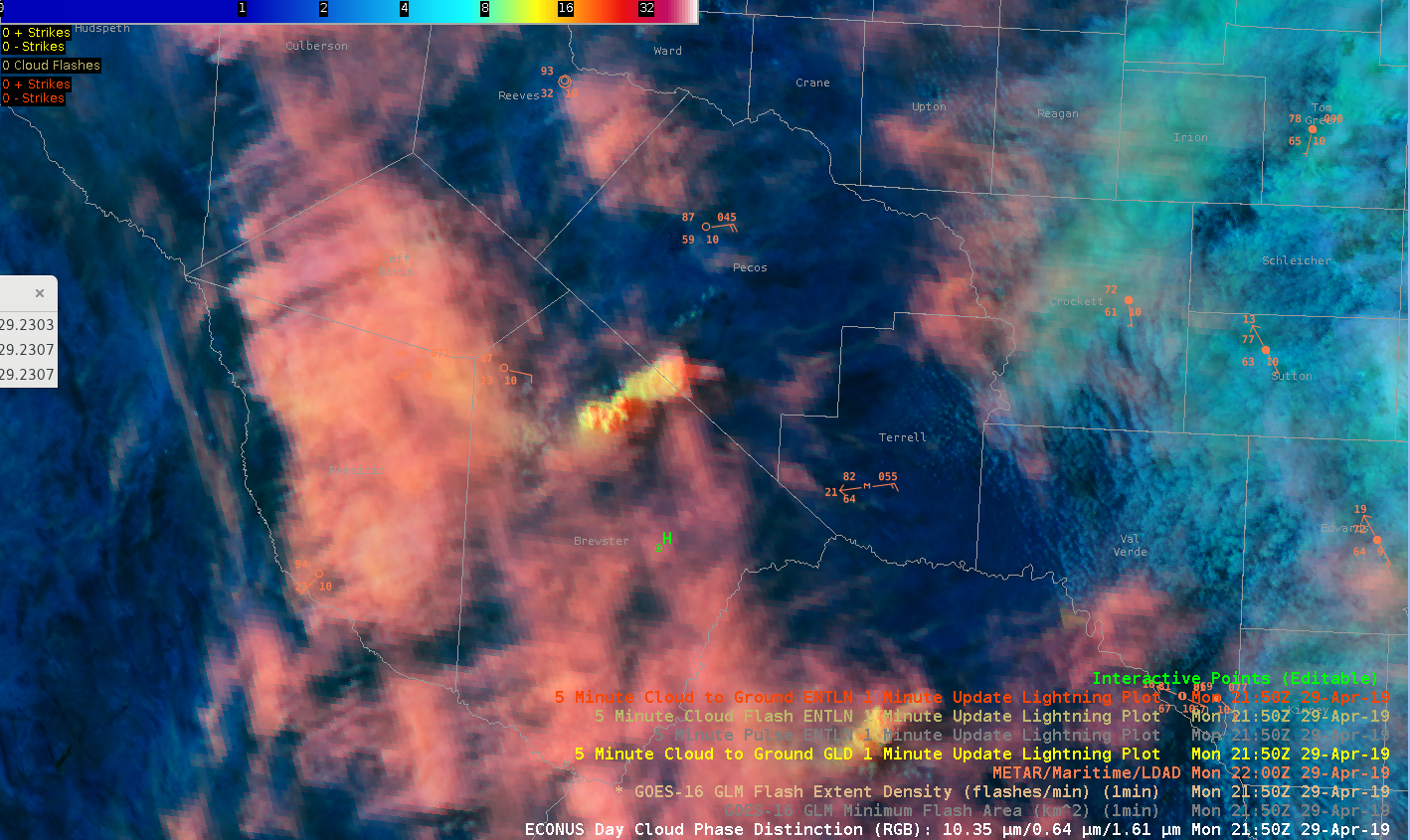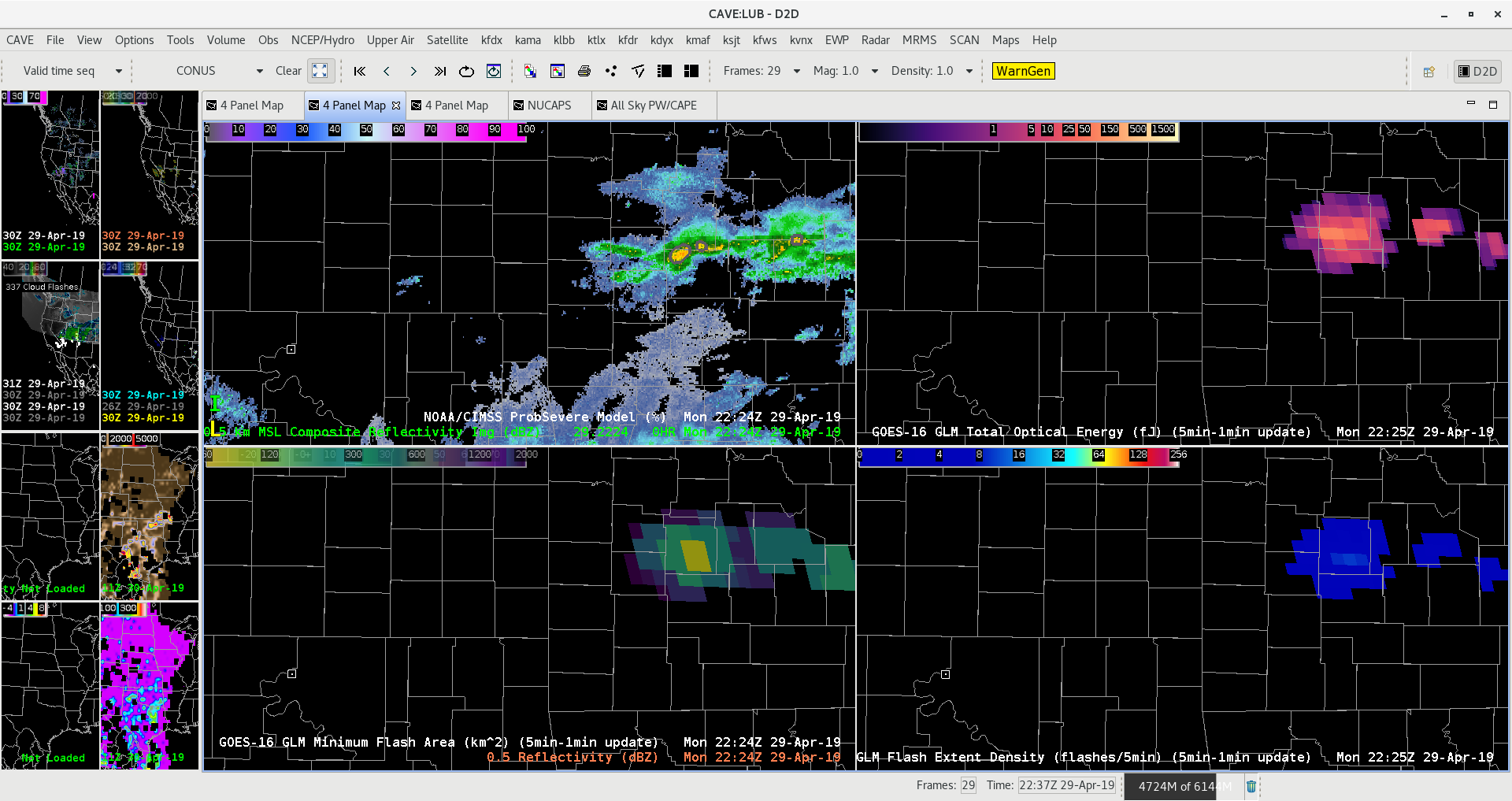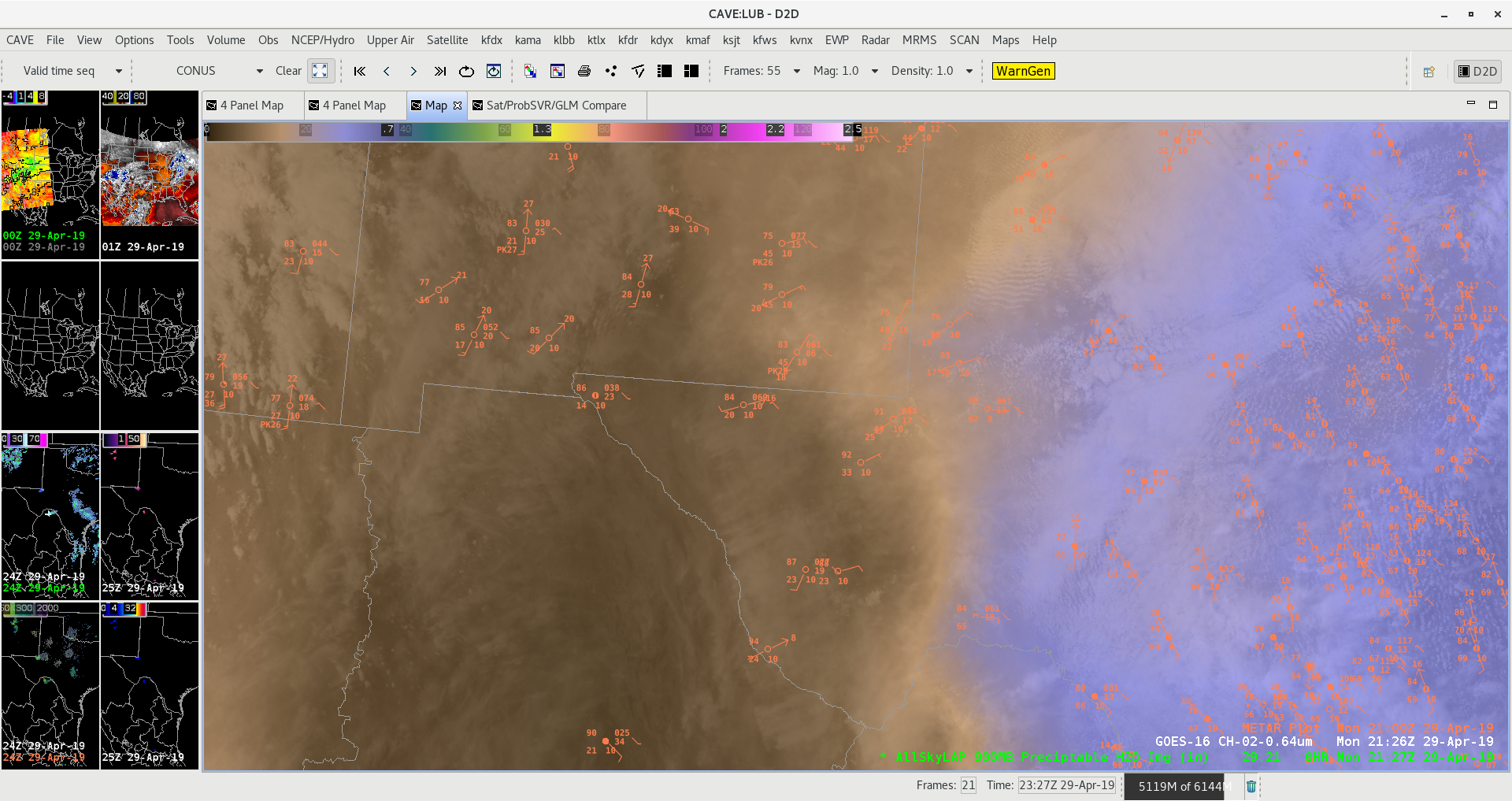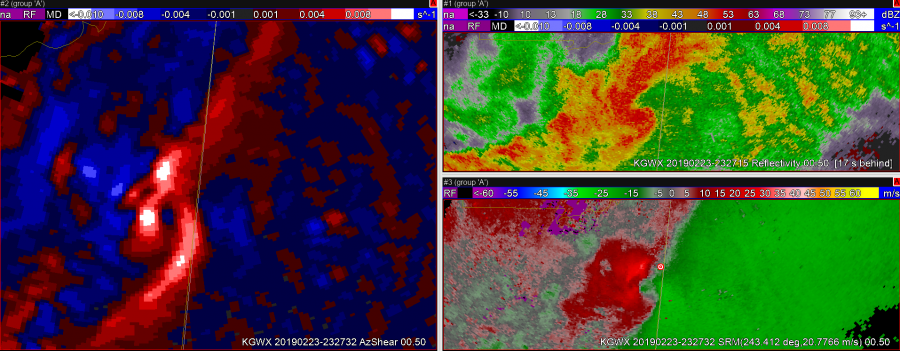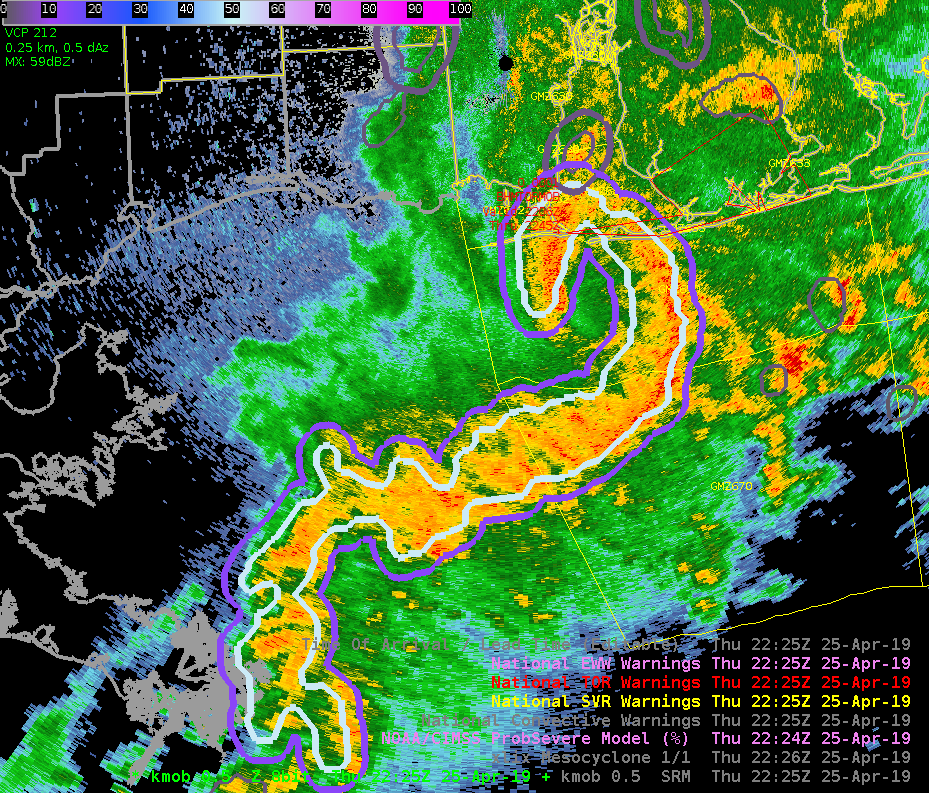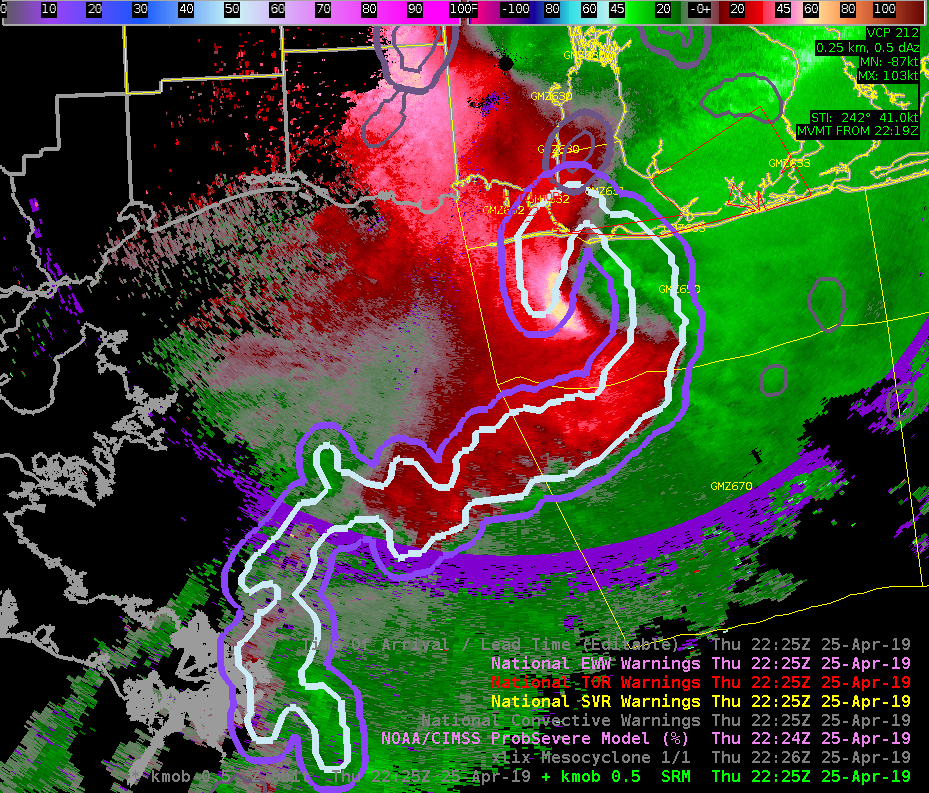First impression of the single radar AzShear……display is rather noisy with lots of couplets…many not associated with any storm. Perhaps if had the option to filter out negative values (blue) so can focus on positive values only would make for easier digestion of data and enhance SA. IN current state of product, would have have to be sure to compare to base velocity data, etc.
Azshear did help draw my attention to potential cyclic nature of the storm and picked up on increasing shear to northeast perhaps a little sooner than if I had not been looking at it. Pickup up on second circulation and locked on to it very well as second tornado(?) developed.
Azshear also seemed to highlight the shear along the RFD/Flanking line rather well.
0-2 km merged product provided similar information. Did not have good feel for 3-6 km product yet.
Again, biggest drawback is the noisiness of Azshear. I could see where this could distract from true area of shear associated with developing mesocyclone. Color enhancement could be improved as well.
Quik TWIP



